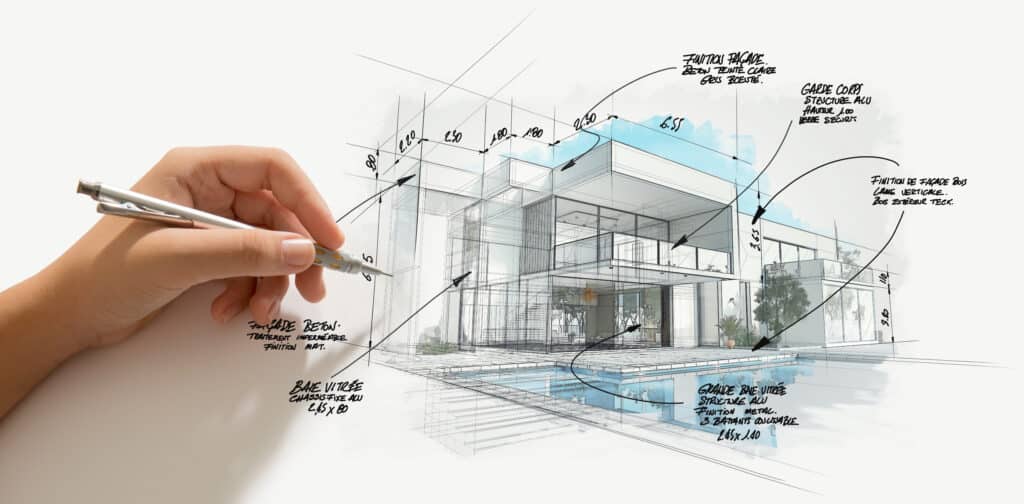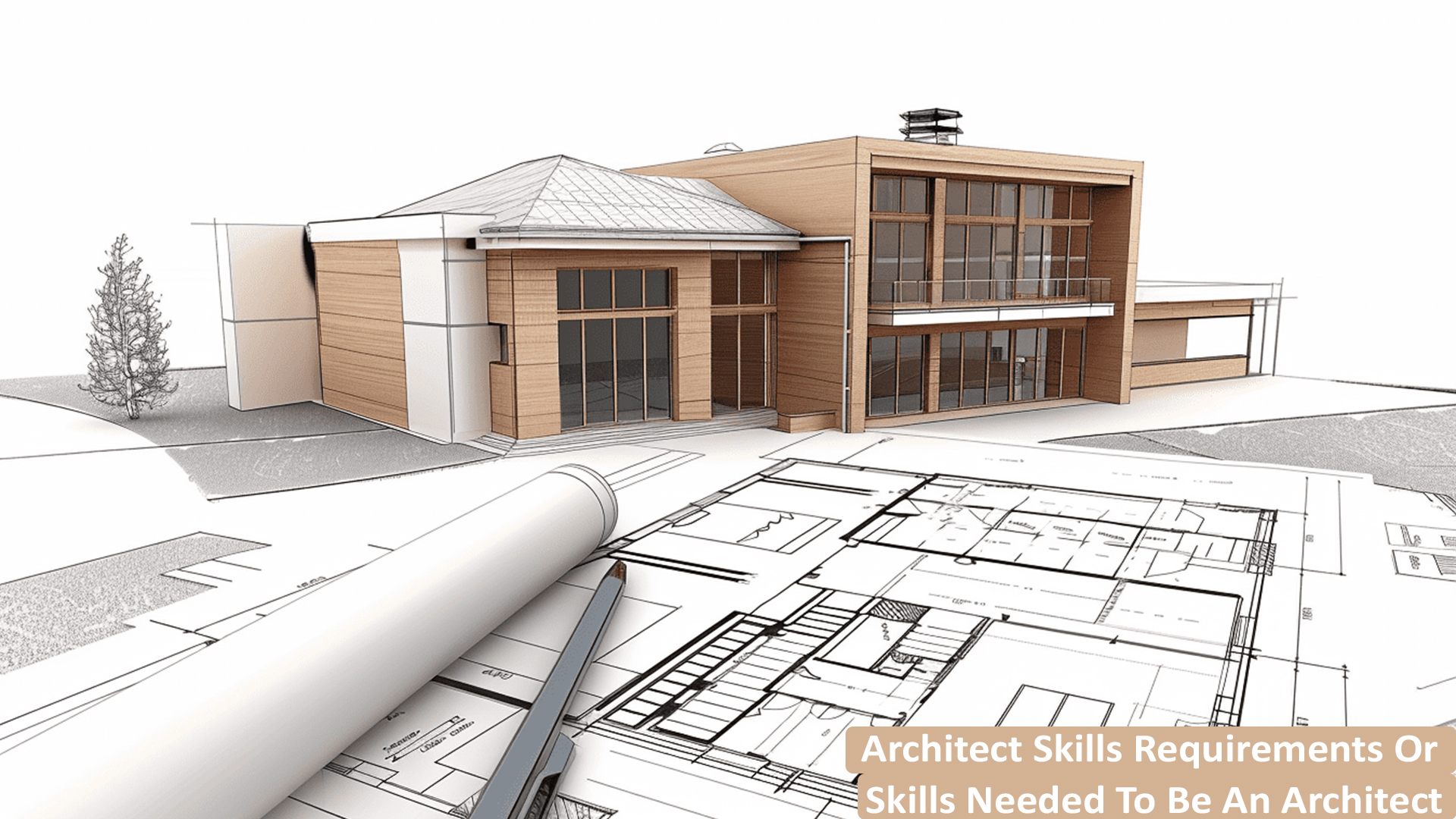Recognizing the Diverse Occupation Paths Available for Aspiring Architect
As an aspiring Architect, you have a world of occupation paths waiting for you. Each course offers one-of-a-kind difficulties and opportunities to apply your imagination and technical expertise. Whether you're drawn to standard design or the nuances of lasting layout, there's a niche that straightens with your interests. Recognizing these diverse options can form your specialist journey, however which instructions will you choose to check out initially?
Standard Style: Creating Frameworks and structures
Traditional architecture focuses on creating structures and frameworks that mix functionality with aesthetic appeal. As you explore this field, you'll appreciate the complex equilibrium in between form and function. You'll discover to draw inspiration from historical designs, incorporating components like symmetry, materials, and craftsmanship. Your designs can reflect cultural heritage, showcasing local traditions while meeting modern needs.
You'll develop skills in preparing, model-making, and website analysis, allowing you to visualize and communicate your concepts properly. Involving with clients, you'll need to recognize their vision and convert it right into possible designs.
Furthermore, constructing codes and sustainability methods are necessary in your job, ensuring your frameworks are eco pleasant and safe. As you expand in your occupation, you'll find opportunities in household, industrial, or even reconstruction jobs, each offering distinct obstacles. Accepting conventional style leads the way for a meeting profession that pays homage to the past while forming the future.
Urban Planning: Forming Communities and Public Spaces
As a hopeful Architect, you can play a crucial duty as a city planner, changing exactly how communities communicate and operate. By utilizing area engagement approaches, you'll ensure that homeowners have a voice fit their setting. Plus, incorporating lasting design concepts will certainly assist develop spaces that not only fulfill today's needs however additionally safeguard the future.
Duty of Urban Planners
While many may assume of architects as the sole dreamers behind structures, urban coordinators play an essential function fit the wider landscape of areas and public spaces. They evaluate land usage, zoning regulations, and community needs to produce lasting settings that boost lifestyle. By working together with numerous stakeholders, you'll aid design parks, transportation systems, and houses that advertise social communication and ease of access. Urban coordinators additionally concentrate on environmental considerations, guaranteeing that advancements incorporate eco-friendly areas and assistance biodiversity. Your proficiency in spatial style and neighborhood dynamics enables you to visualize future growth while protecting cultural heritage. In this important function, you'll directly influence exactly how people experience their surroundings, making every task an opportunity for positive change.
Community Engagement Approaches
Reliable neighborhood engagement approaches are crucial for metropolitan organizers to ensure that the voices of locals are listened to and valued in the preparation process. To cultivate significant dialogue, you must prioritize open discussion forums and workshops where neighborhood members can reveal their ideas and problems. Use studies and social networks to get to a wider audience, making sure diverse viewpoints are included. Teaming up with local companies can enhance depend on and facilitate much deeper links. It is very important to provide clear info concerning proposed tasks and decision-making processes, enabling locals to really feel informed and equipped. By proactively incorporating and listening responses, you'll create areas that mirror the community's needs, eventually leading to more sustainable and successful metropolitan settings. Embrace transparency and constant discussion for long-term impact.
Lasting Layout Concepts
When designing city areas, incorporating lasting style principles is crucial for developing atmospheres that thrive both environmentally and socially. Think about integrating environment-friendly rooms, like parks and gardens, to improve biodiversity and improve air top quality.
Designing with water conservation in mind is likewise essential-- assume regarding rainfall gardens and absorptive surface areas to manage stormwater. Including community members during the preparation process warranties that the areas you develop satisfy their demands and motivate social communication. By embracing these concepts, you'll contribute to lively, sustainable metropolitan landscapes that profit everybody.

Landscape Architecture: Developing Lasting Outdoor Environments
As you discover landscape design, you'll discover essential layout principles that create attractive and practical exterior spaces. Lasting methods play an important duty in guaranteeing these environments prosper while reducing ecological effect. Plus, you'll discover a variety of job chances that permit you to make a genuine distinction in how individuals communicate with nature.
Layout Principles in Landscape
Recognizing style principles in landscape design is vital for creating lasting outside environments that balance with nature. You'll require to consider components like equilibrium, range, and proportion to guarantee your styles really feel cohesive and inviting. Integrating indigenous plants not only improves biodiversity however additionally reduces water usage, making your landscape resilient. Think of the circulation of room and how people engage with it; paths and seating locations should invite exploration and leisure. In addition, take notice of seasonal modifications, creating with products that enhance the environments year-round (Architect). By prioritizing sustainability and appearances, you can create outdoor spaces that enhance the neighborhood and promote wellness. Accepting these concepts will certainly establish a solid structure for your job in landscape style.
Sustainable Practices Overview
Lasting practices in landscape design not just concentrate on aesthetic appeals yet additionally prioritize ecological health and wellness and here resource preservation. You can develop areas that advertise dirt health, such as practicing and utilizing natural products permaculture concepts. Inevitably, these practices ensure your styles profit both individuals and the setting for years to come.
Career Opportunities Exploration
With a strong foundation in sustainable methods, landscape style supplies a variety of career paths that enable you to make a significant influence on the setting. You can function as a landscape developer, producing cosmetically pleasing and useful exterior rooms, or concentrate on eco-friendly restoration, helping to revive damaged ecosystems. Urban planners frequently work together with landscape designers to create green spaces in city setups, boosting city livability. If you're enthusiastic regarding education, consider becoming a landscape style instructor, motivating future generations. Furthermore, you might deal with nonprofits concentrated on ecological sustainability or participate in research to innovate brand-new methods. Each path not only forms lovely atmospheres however also cultivates a much healthier world for future generations.
Sustainable Style: Focusing on Eco-Friendly Practices
As you discover your career in design, embracing eco-friendly methods can establish you apart in a competitive area. Sustainable layout concentrates on producing structures that reduce ecological impact while improving occupant wellness. By including renewable products, energy-efficient systems, and lasting building methods, you'll add to a greener future.
Start by getting understanding of green qualifications like LEED or BREEAM, which can bolster your credentials. Take into consideration how natural light, ventilation, and thermal performance can maximize design. Work together with designers and ecological consultants to innovate services that minimize waste and preserve sources.
Don't fail to remember the value of area participation-- engaging local stakeholders can inspire styles that balance with the atmosphere. As customers significantly focus on sustainability, your proficiency get more info in environment-friendly methods will certainly not just bring in tasks yet additionally accomplish your interest for liable style. Welcome this crucial aspect of the profession, and watch your career flourish.
Historical Conservation: Shielding and Recovering Social Heritage
While you start on your building trip, think about the vital function of historic preservation in maintaining our social heritage. This area concentrates on the security and remediation of significant structures, sites, and frameworks that tell the tales of our past. By involving in historic preservation, you'll help guard the building tradition that shapes neighborhood identity.
As a historic conservation Architect, you'll analyze historic relevance and evaluate the problem of structures. You'll function carefully with guardians and historians to assure genuine restoration methods are used. This profession course enables you to blend creative thinking with research, allowing you to create services that value original products and craftsmanship.
Your job not only contributes to sustainability by recycling existing structures however additionally fosters a feeling of pride within communities. Accepting this course will assist you come to be a guardian of history, preserving the tales and aesthetic appeals that enrich our lives.
Interior Style: Enhancing Indoor Spaces
Historical preservation and indoor design both share a dedication to boosting the built atmosphere, yet they focus on different facets. While historical preservation highlights preserving a framework's historical and social worth, indoor architecture nos in on enhancing indoor areas for capability and visual appeals.
As a hopeful Architect, you'll locate that indoor design permits you to mix creativity with technical skills. You'll develop areas that not only look good however likewise promote convenience and effectiveness. This area includes comprehending exactly how light, shade, and products engage within a room, affecting mood and functionality.
You'll work on different jobs, from property homes to industrial offices, making sure that each environment meets the needs of its occupants. By focusing on customer experience, you can transform interiors right into motivating and useful areas, making a significant effect on how individuals connect with their surroundings. Embrace the chance to improve indoor environments and form the method people function and live.
Industrial Layout: Combining Performance With Looks
Industrial design plays an important duty in producing items that effortlessly blend visual appeals with functionality, making certain that what you make use of daily is not just visually appealing yet likewise useful. As an ambitious Architect, you could involve yourself in this area, concentrating on designing every little thing from furniture to customer electronic devices. Your work entails understanding customer requirements, products, and producing procedures, enabling you to develop ingenious solutions that improve everyday experiences.
In commercial layout, you'll usually work together with marketing professionals, engineers, and makers, guaranteeing that your designs are not only beautiful yet additionally viable. This job course provides a dynamic environment where creative thinking fulfills functionality, making it a gratifying choice for designers interested in shaping the products of tomorrow.
Frequently Asked Questions
What Educational Qualifications Do I Required to Come To Be an Engineer?
To come to be a designer, you'll need a specialist degree in architecture, generally a Bachelor's or Master's. Furthermore, you'll have to finish a teaching fellowship and pass the Architect Registration Examination to exercise lawfully.
Exist Accreditation Requirements for Various Architectural Job Paths?
Yes, there're accreditation requirements for numerous architectural courses. Architect. You'll need to pass exams, total internships, and occasionally go after specialized training, relying on your selected emphasis, like landscape architecture, city design, or historical preservation
What Software Program Skills Are Crucial for Architects Today?

How Can I Gain Practical Experience While Researching Design?
You can gain sensible experience by interning at architectural companies, taking part in design competitors, volunteering for area projects, or working together with classmates on real-world jobs. These chances boost your skills and construct useful links in the market.
What Job Opportunities Exist Outside Typical Design Firms?
You can discover various work opportunities outside typical architecture companies, like urban planning, indoor design, landscape design, construction administration, actual estate development, or also duties in sustainability consulting. Each offers special obstacles and rewards.
Whether you're attracted to typical architecture or the nuances of lasting layout, there's a specific niche that straightens with your passions.When developing metropolitan rooms, including sustainable style concepts is crucial for developing atmospheres that thrive both ecologically and socially.As you check out landscape design, you'll discover important style principles that develop gorgeous and practical exterior spaces.Understanding design principles in landscape design is necessary for developing lasting exterior settings that integrate with nature.In commercial click here style, you'll commonly team up with manufacturers, marketers, and designers, making certain that your layouts are not just stunning however also feasible.